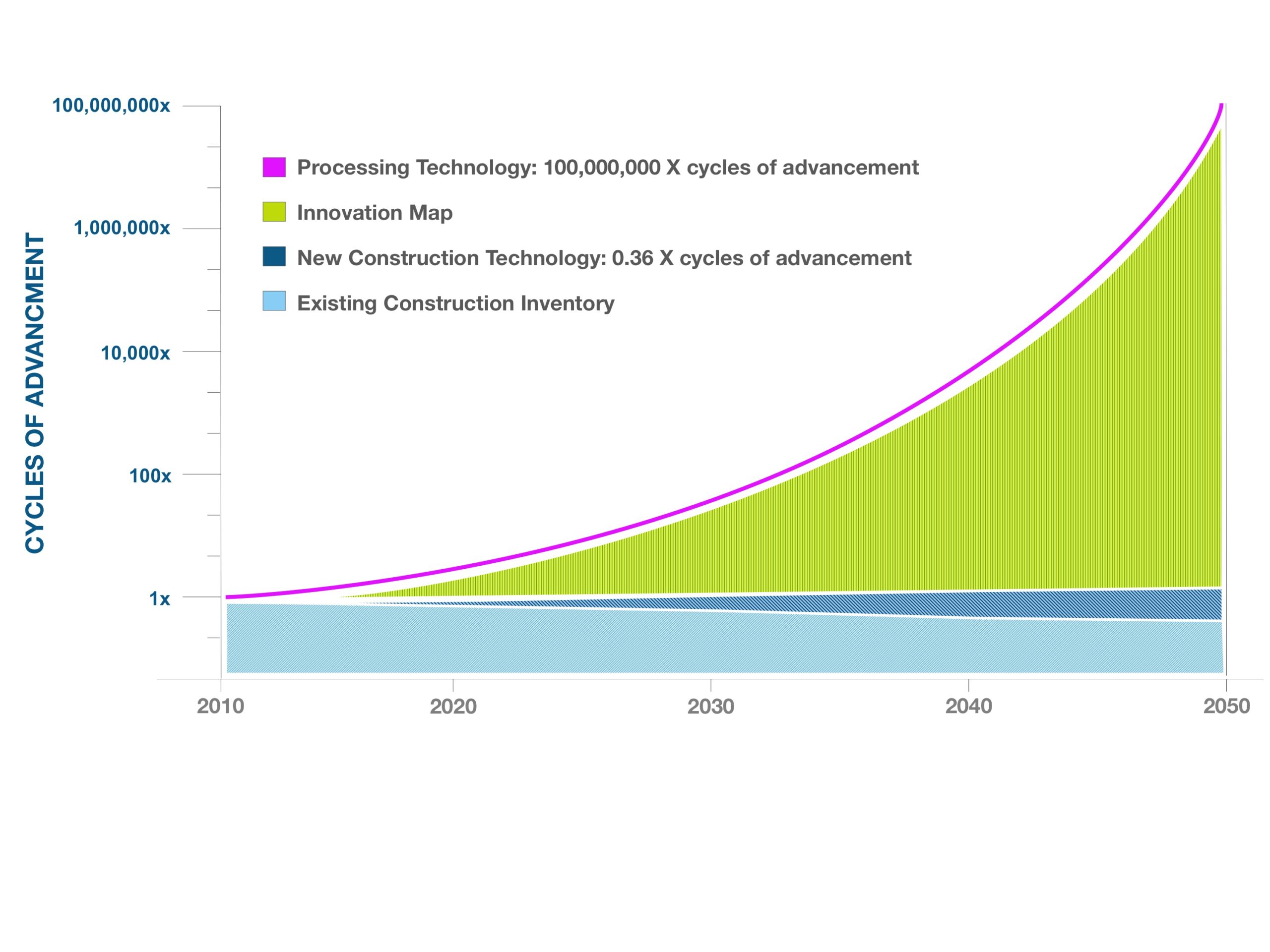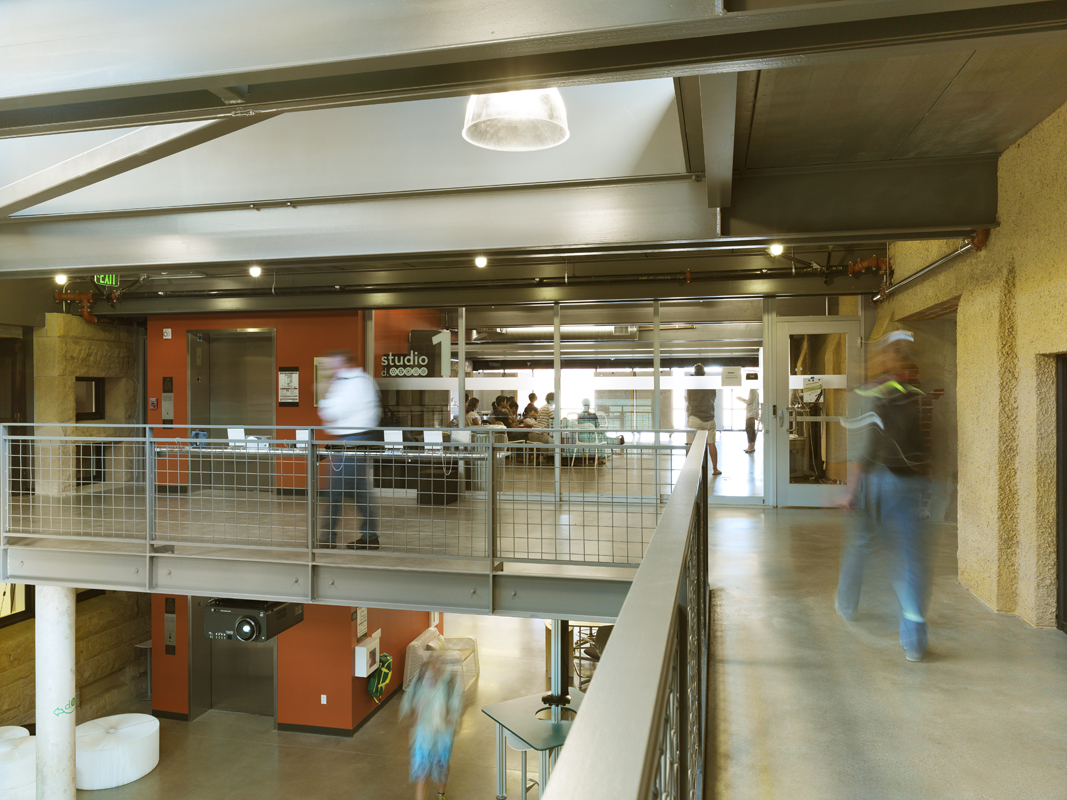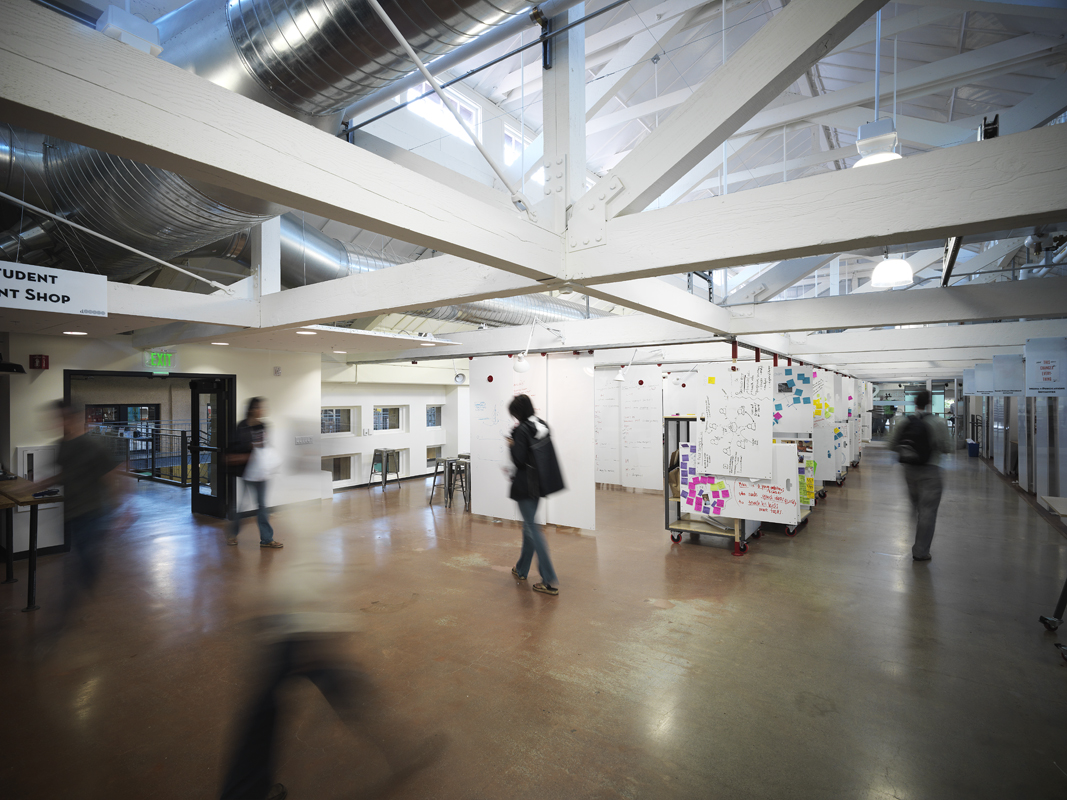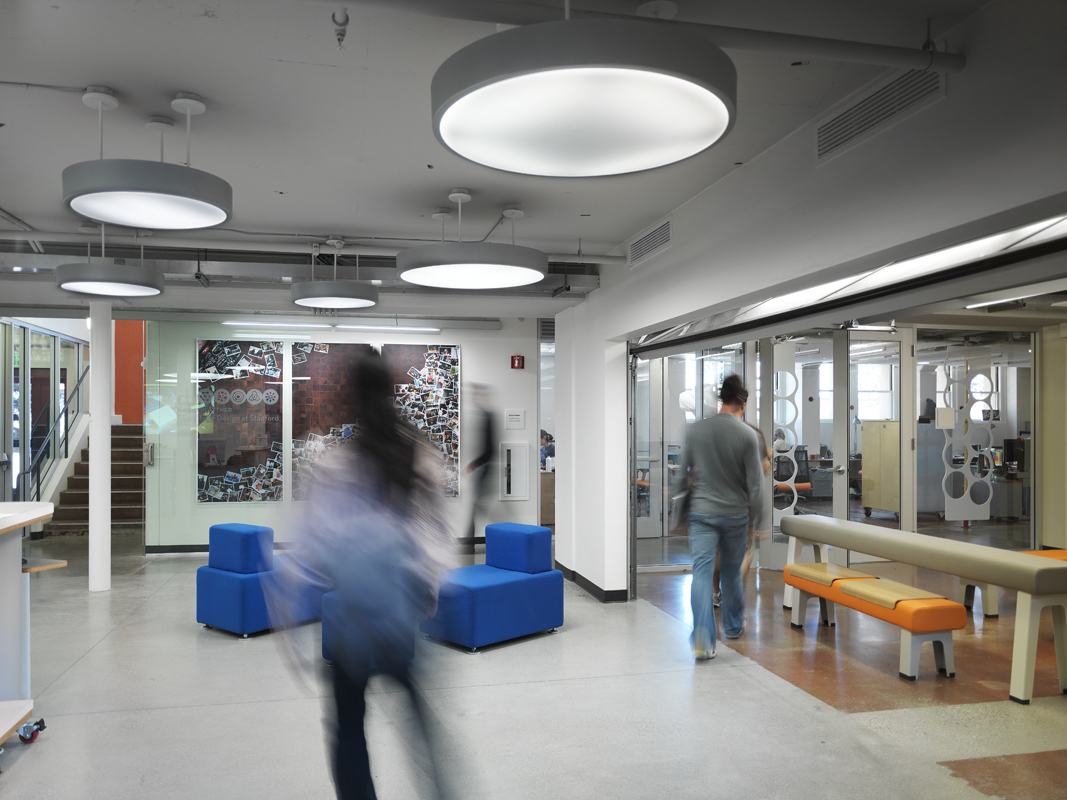
September 29, 2013
Analog Assets: Digital Age
Bridging the innovation gap in the architecture/engineering industry
Mobile technology is developing at an exponential rate. Architecture evolves at a glacial pace. Result? We have an “innovation gap” between the spaces we inhabit and the furiously changing nature of the activities our spaces need to support.
According to Moore’s Law, the number of transistors able to be fit on an integrated circuit doubles every year and a half, affecting a wide array of performance capabilities for virtually every electronic device imaginable. Historically, as technology performance increases, the cost to consumers decreases.
But the building industry advances at an arithmetic pace. Today the intended lifespan of a building is roughly 30 to 50 years, with the average commercial lease being 4 years. The traditional design/build process from concept through construction may take years. This slow pace has the unfortunate consequence of making the average new commercial building 4 years obsolete on the first day it opens.

This “innovation gap,” created by the disparate evolutionary trajectories of modern life and the built environment, need not be seen as a sign of incompatibility, but rather as a rich zone of opportunity for advancement in architecture.
For architects to leverage this zone of opportunity, we must understand the reasons for change and associated technologies, and then move towards strategies that reflect the next epoch of evolution.
We can learn from other successful industry precedents.
Software is continuously updated to make sure the product serves the changing needs of the user. Design decisions are based on measured information. Iterative research and design cycles are constantly informed by real-time user and financial input; optimizing the effectiveness of development dollars.
The emergence of a “sharing economy” is changing the way we use expensive assets. Take, for example, how companies like Airbnb and Zipcar have utilized connected technology to revolutionize the way people find and share resources on an as-needed basis. Complex facilities like those in education and healthcare could learn a valuable lesson from the sharing industry. Specialized equipment and supplies require substantial front-end investment and require valuable square footage to accommodate, while often being used relatively infrequently at tremendous cost.
21st Century facilities need to be:

Relevant
Leading institutions recognize that in a digital world, building is not always the answer. Using qualitative and quantitative research as an integral part of the design process yields spaces more aligned with organizational values and priorities. Spatial intelligence derived from a quantified investigation of current actual usage, user activities, and perceived user needs enable effective strategic planning. Ultimately, the “right space” trumps “more space.”
Of course, technology will continue to play a large part in facilities optimization. Concepts like Telehealth, the electronic communication of medical data between and among providers and patients, may seem like an IT issue, but has far-reaching facilities implications as well. Communication efficiencies provide opportunities to recoup physical space and re-imagine complex facilities design.

Nimble
Flexible spaces enable a more diverse array of activities and provide a framework to accommodate rapidly changing needs over time. Re-configurable space design, modularity, and prefabrication are some of the hallmarks of agile building.
Stanford University’s world famous d.School is well known for advocating and developing “Design Thinking,” an iterative learning and development process focused on collaboration and rapid prototyping with user needs as the primary driver. The space inhabited by the d.School closely mirrors the organizational mission. Flexible spaces with movable components not only support the organizational mission but also allow for easy adaptation for evolving programs and spatial needs.
Green
In a world of limited resources, facilities must consume less during the design / construction cycle as well as in operation phase. A detailed understanding of resource consumption is vital to genuinely sustainable design.
The bulk of energy and resources consumption occurs well before ground breaking on new construction. In addition to high efficiency systems and design, companies like Project Frog utilize parametric energy modeling and prefab manufacturing to eliminate waste on the front end of construction.
Often overlooked in the realm of sustainability is repurposing and reprogramming of existing structures. Ultimately, the greenest building may be the one you don’t have to build.

Intelligent
Responsive buildings are becoming active data-gathering resources that provide organizations with insight.
For tomorrow’s buildings, sensors measuring everything from operational efficiency to user performance give administrators a clear picture of actual facilities performance. Coupled with cloud-based analytic tools, this data enables key decision makers to keep facilities in step with the fast pace of a global, connected society.
To truly bridge the innovation gap, we need to view the built environment as a system rather than as an object. Understanding the metric interdependencies among built assets, organizational culture, and resource consumption provides a roadmap to devise meaningful strategies for both facilities management and organizational development.
Mark Miller, AIA, is CEO and co-founder of MKThink, the San Francisco ideas company for the built environment, specializing in insight and invention. MKThink integrates research, analysis, design and technical services to provide thoughtful solutions to contemporary issues at the intersection of culture, architecture, and the environment. Trained as an architect and planner, Mark excels at generating and connecting building, environment, human behavior, and technology thought leadership for strategic assignments that require integrated creativity, vision, and practical implementation.





